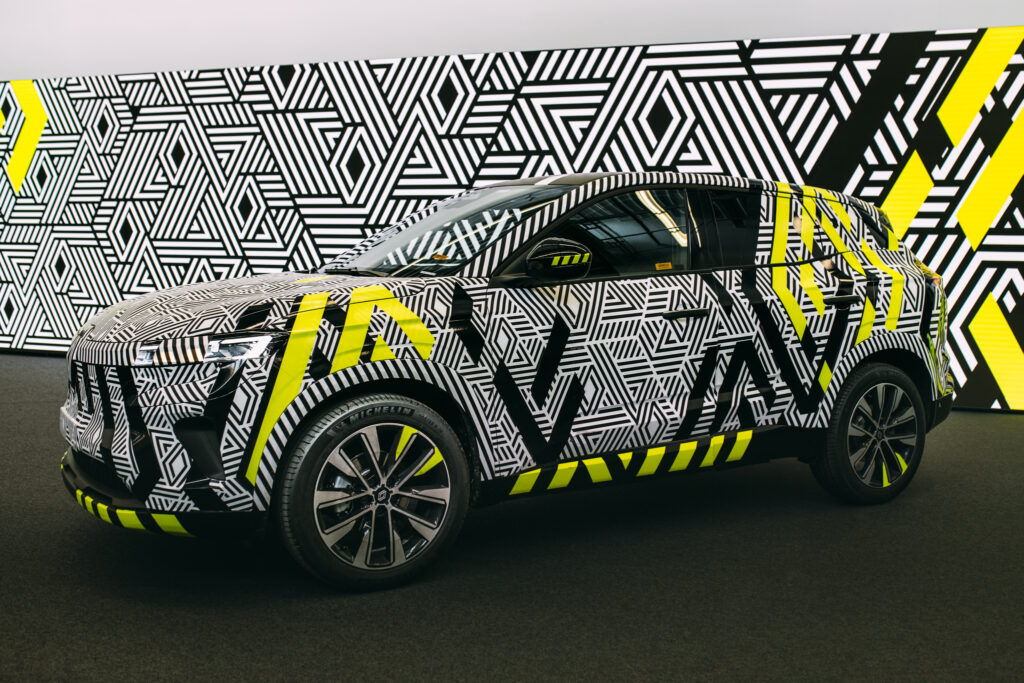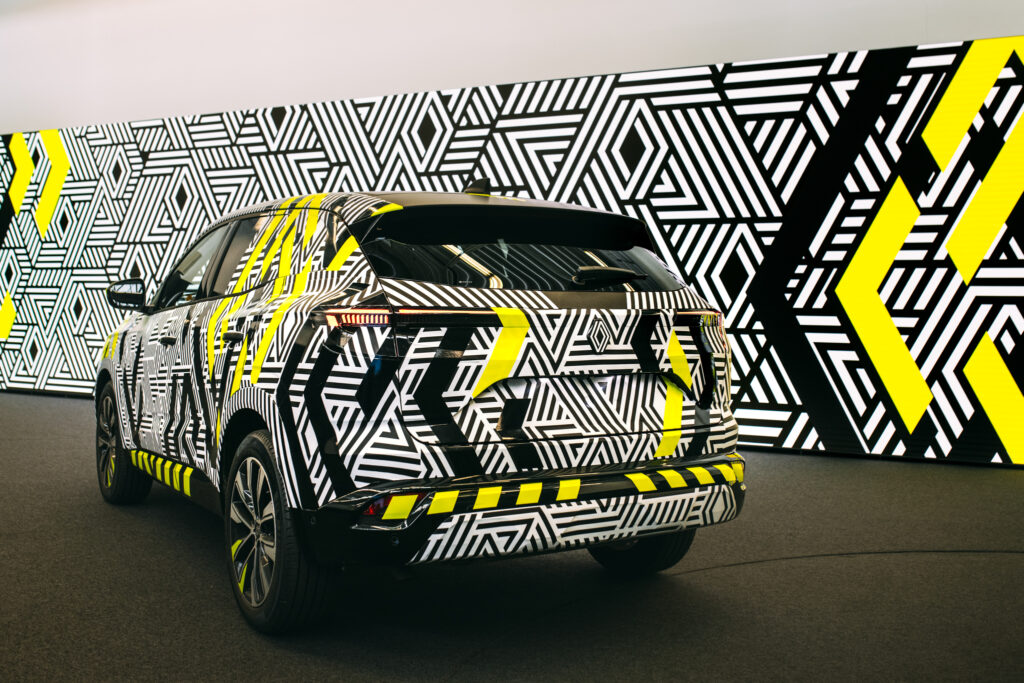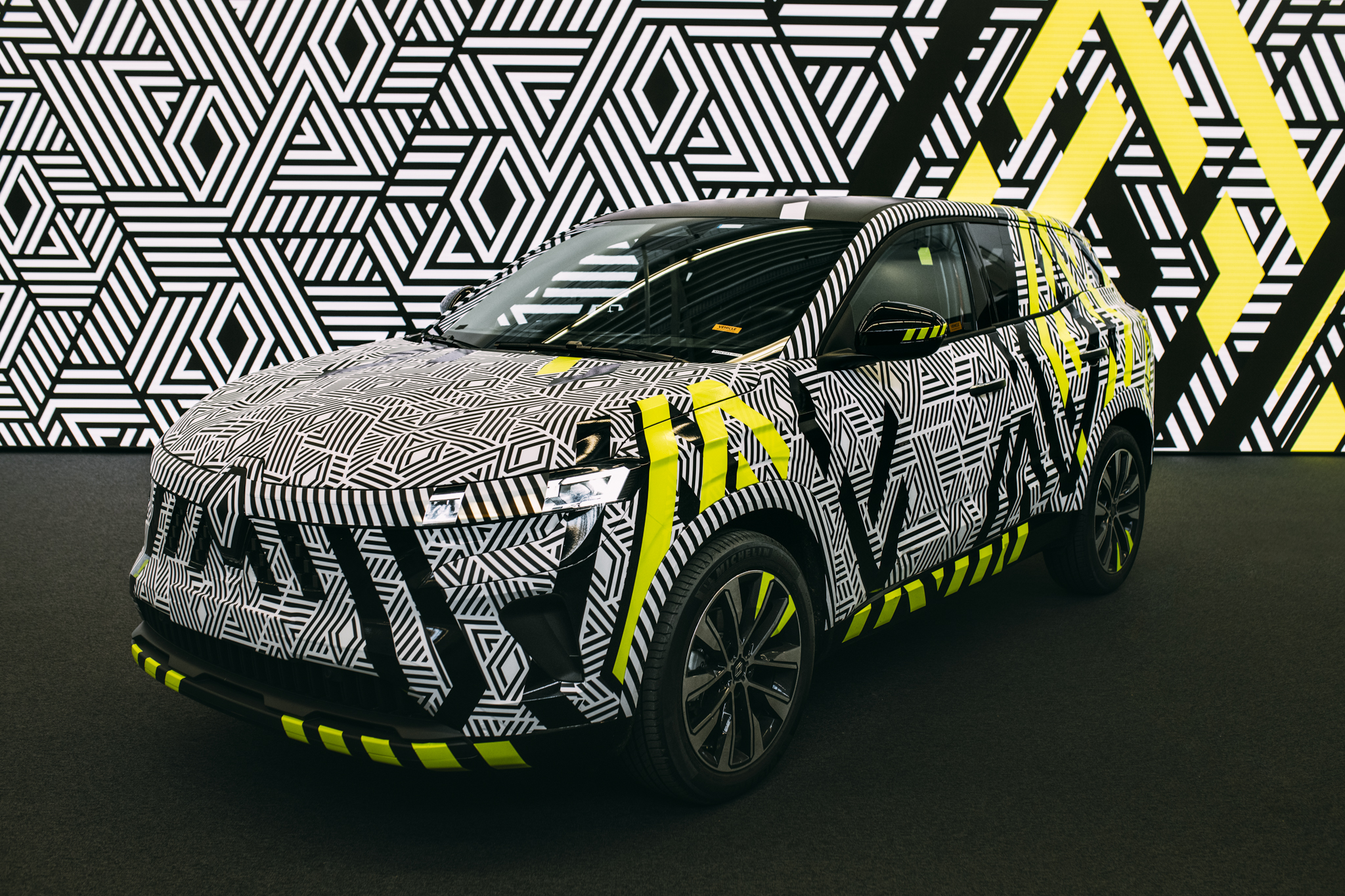Before its official presentation, a new model undergoes its first tests on open roads wearing a camouflage designed to hide its lines and styling secrets. Why not transform the camouflage of the prototypes into a real artistic creation? This is the challenge taken up by François, a designer in the Renault Group’s Design Department. He explains how he created a specific sticker to hide the lines of the All-New Austral.
On social networks, on the Internet or in specialized magazines, the hunt for “spyshots” of new models is in full swing throughout the year. The shots are numerous, but rarely nude. Most of the time, the prototypes immortalized in flagrante delicto test drives on open roads are carefully covered with more or less psychedelic black and white stickers. The aim is simple: to protect the future models from prying eyes so that their official unveilingremains a big surprise.
These camouflages hide or distort the striking lines and characteristic design elements of a new model. This often concerns the grille, the edges of the wings, the bonnet, the headlights and even the brand’s logo.
While Renault’s Design teams are proud of their designs, they are forced to make their work appear ugly so it can remain a secret right through to the official unveiling.

Hide with style
For its ” preliminary reveal “, the All-New Renault Austral has been covered with a unique sticker, imagined and designed by François. Truly inspired, the covering enhances rather than detracts from the vehicle’s look. While full of strikingly graphic lines, it nevertheless serves its primary function: that of camouflaging. But it does it with style!
There are two main ways that car manufacturers like to keep things under wrap:
– fake padding or prosthetic attachments that help conceal the car’s true shape
– a sticker covering that acts like a second skin over the car’s body
When designing the sticker covering for the All-New Renault Austral, François, kept coming back to two fundamental questions: “Why must you hide something beautiful beneath an ugly façade?” and “Why can’t you hide art with art?“

During World War I, Anglo-Saxon warships used a camouflage called “dazzle” or “razzle dazzle“. The ships were entirely covered with very graphic shapes, only in black and white. This strong contrast was intended to break up perspective, reflections and light.











